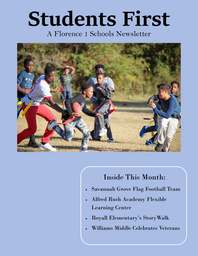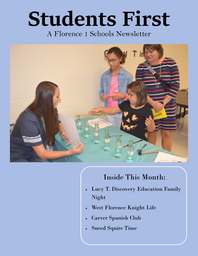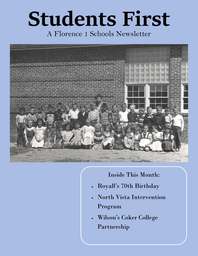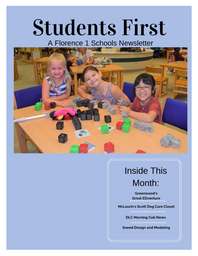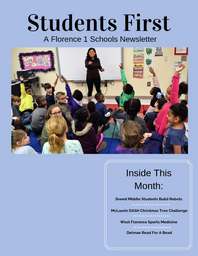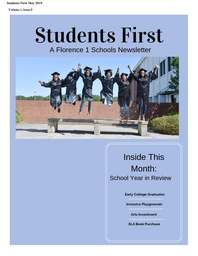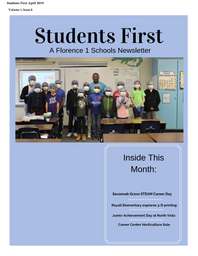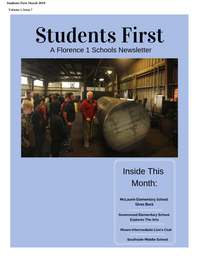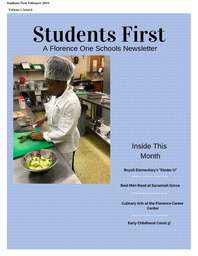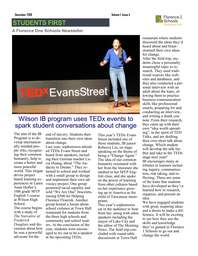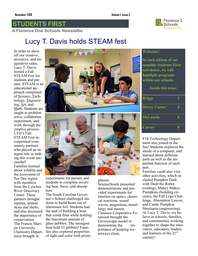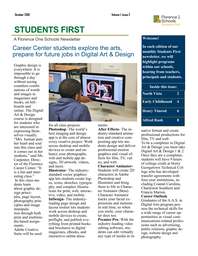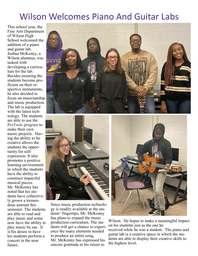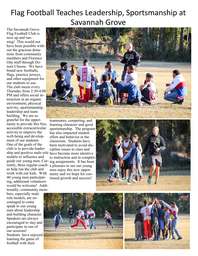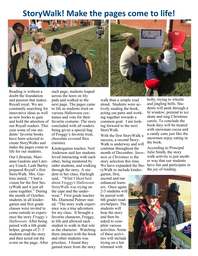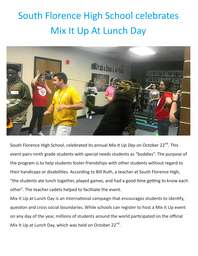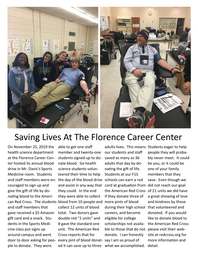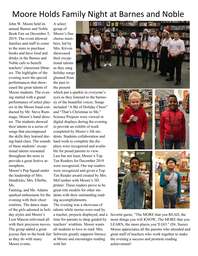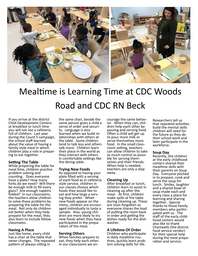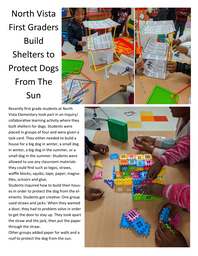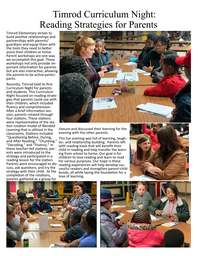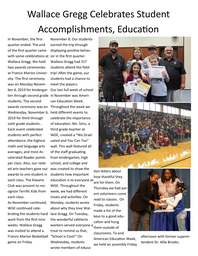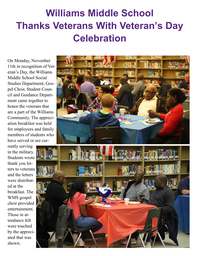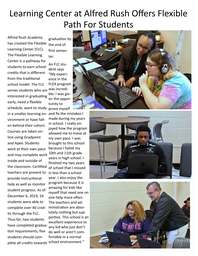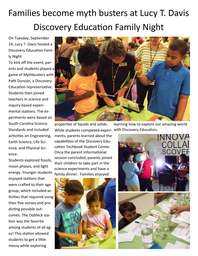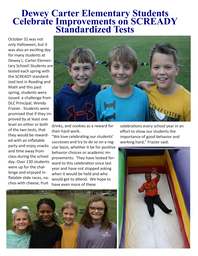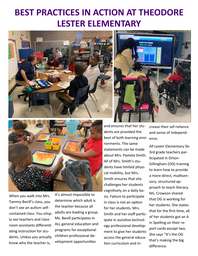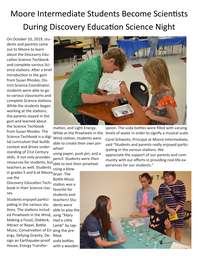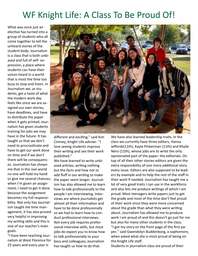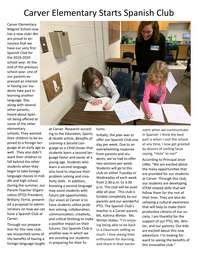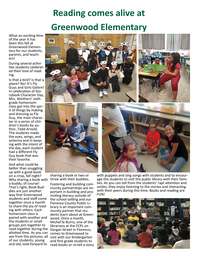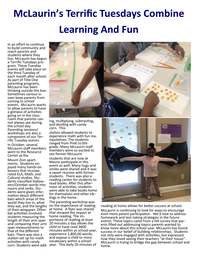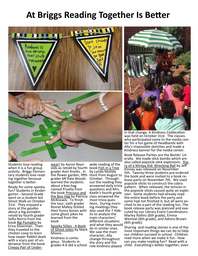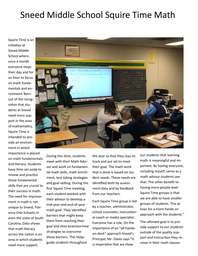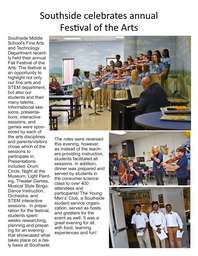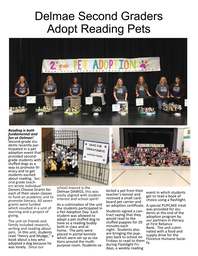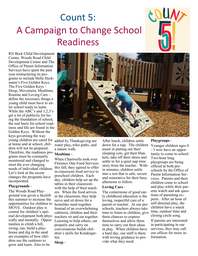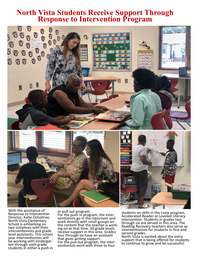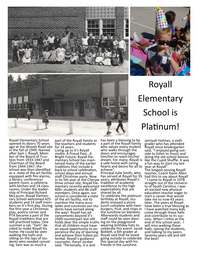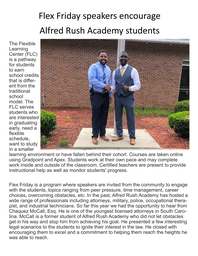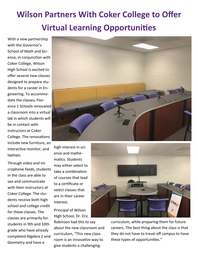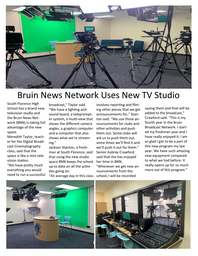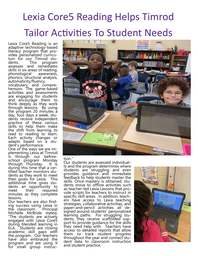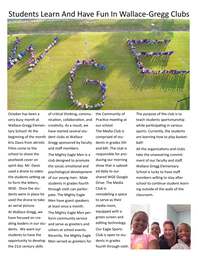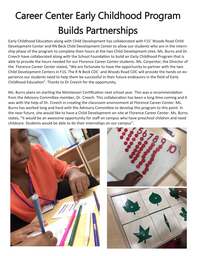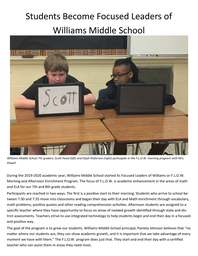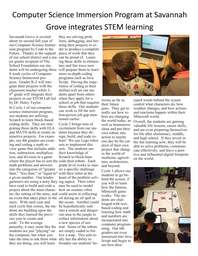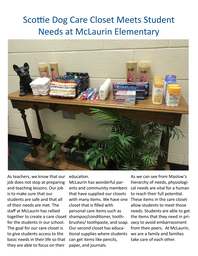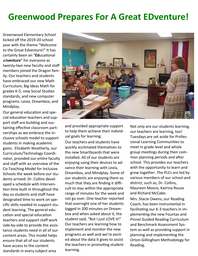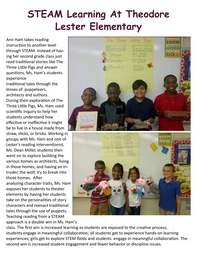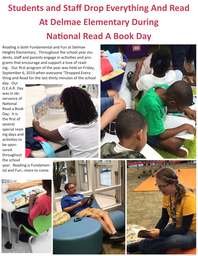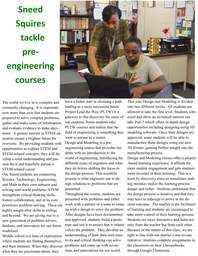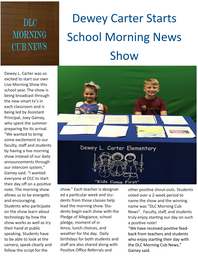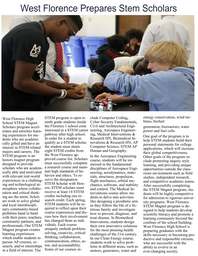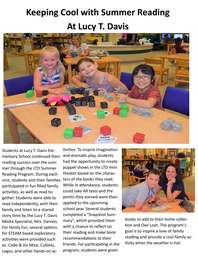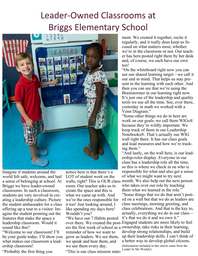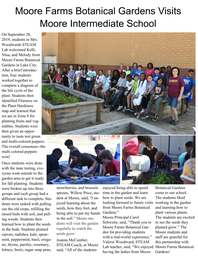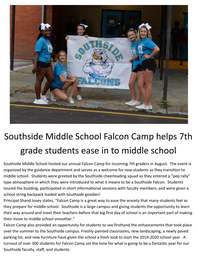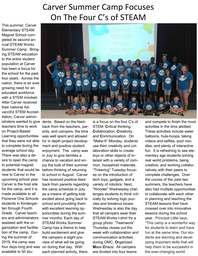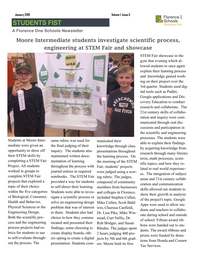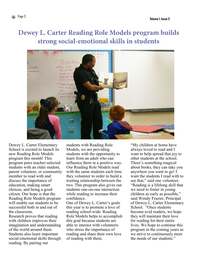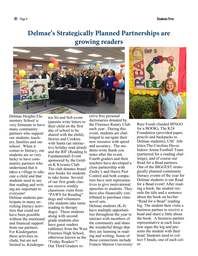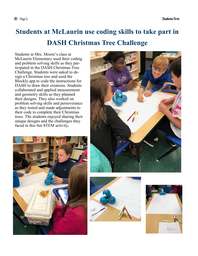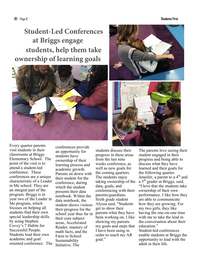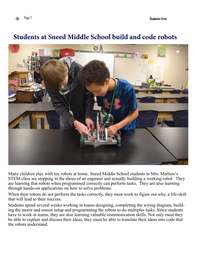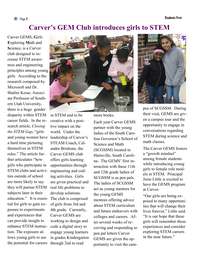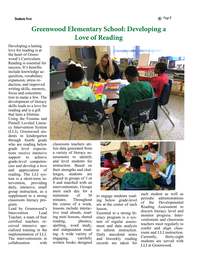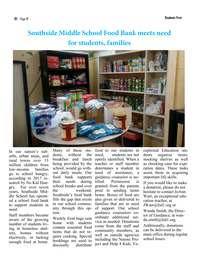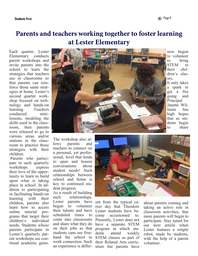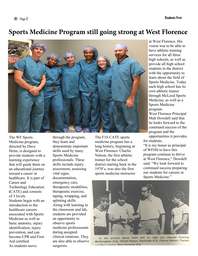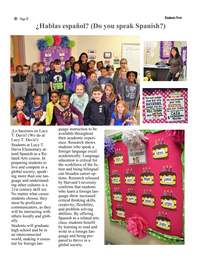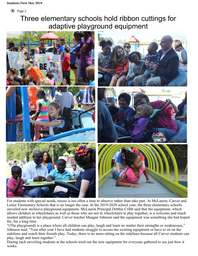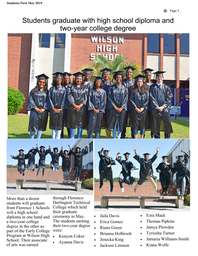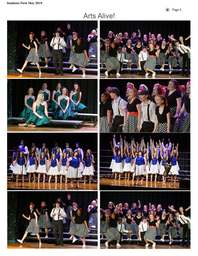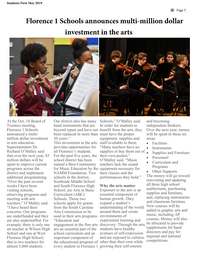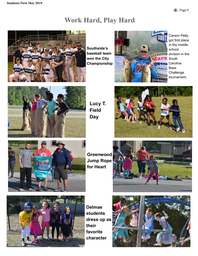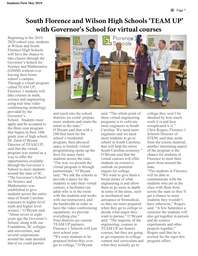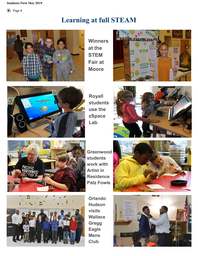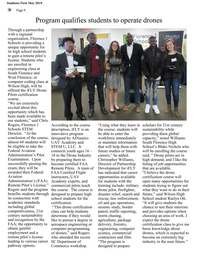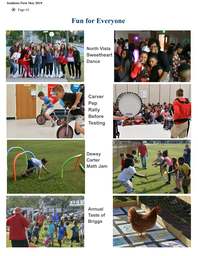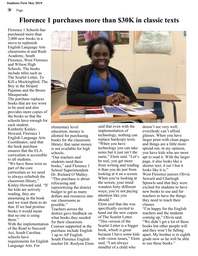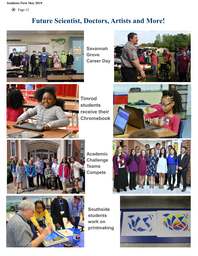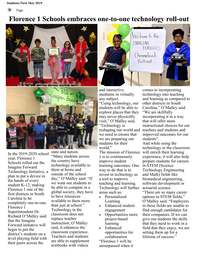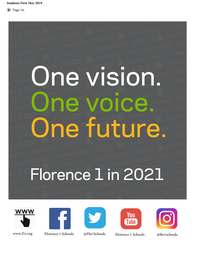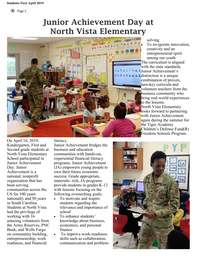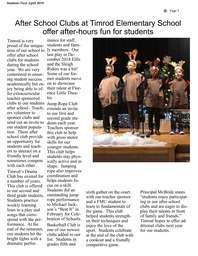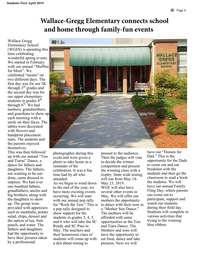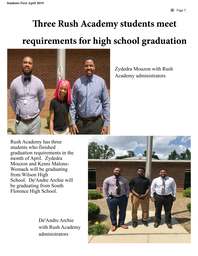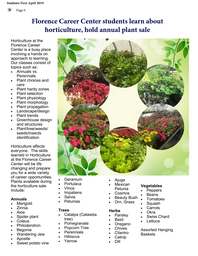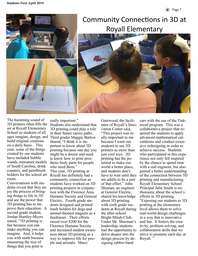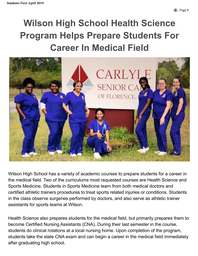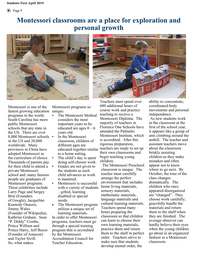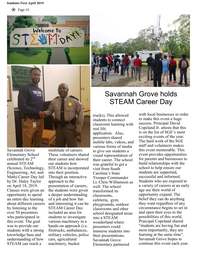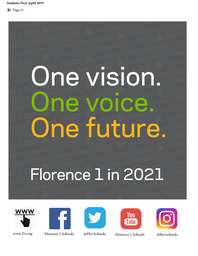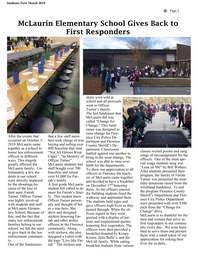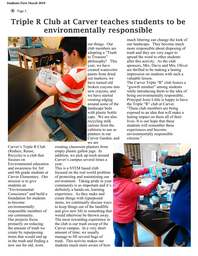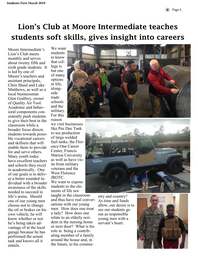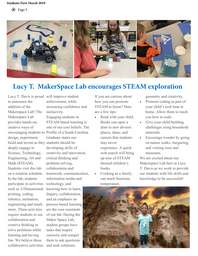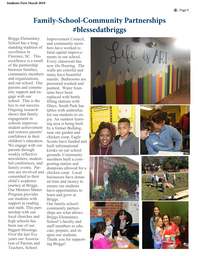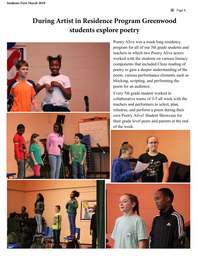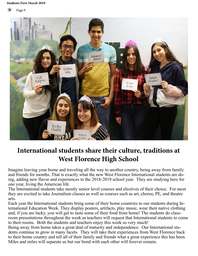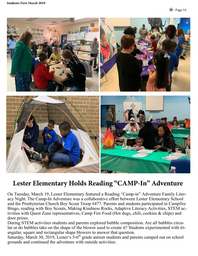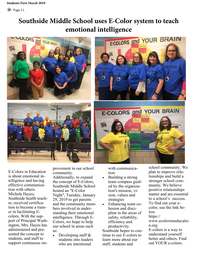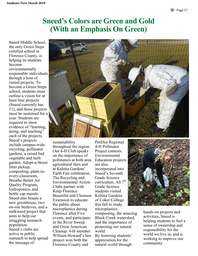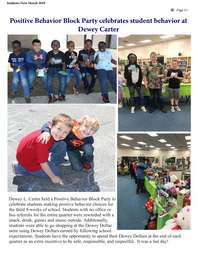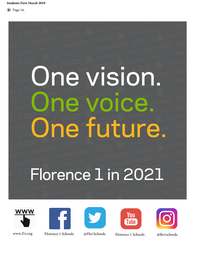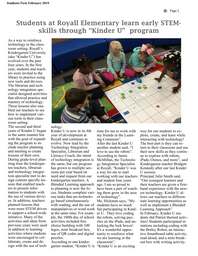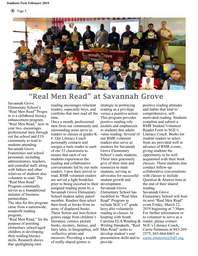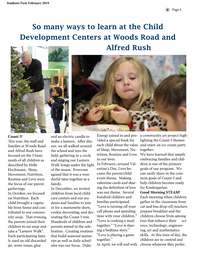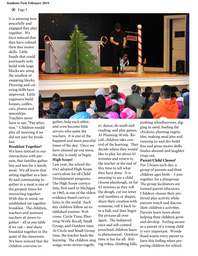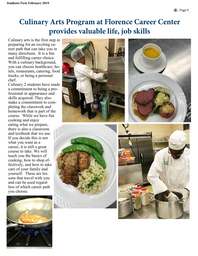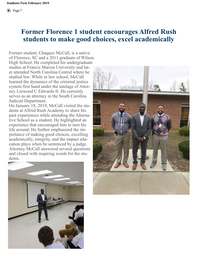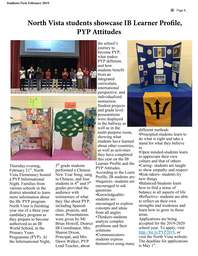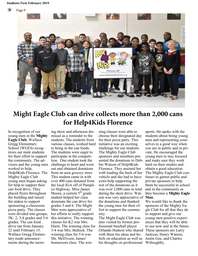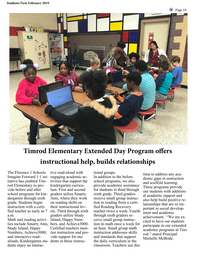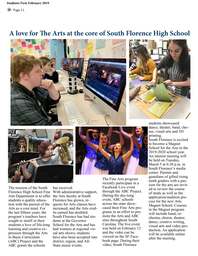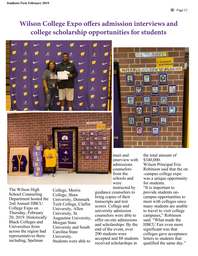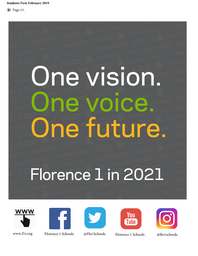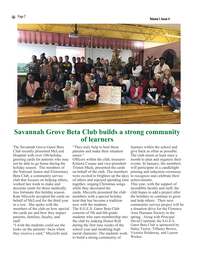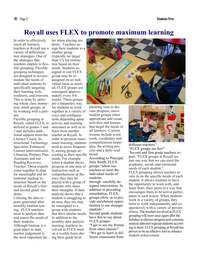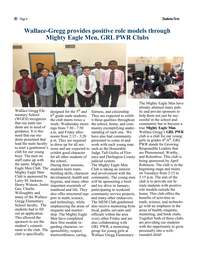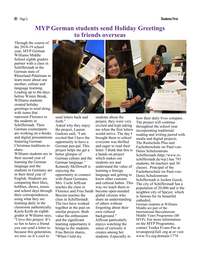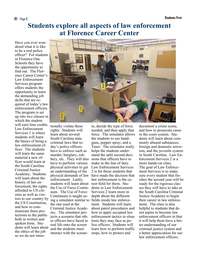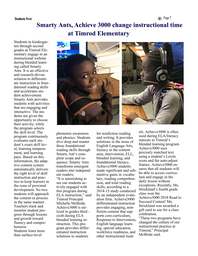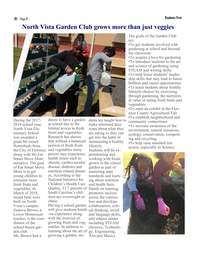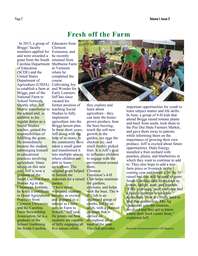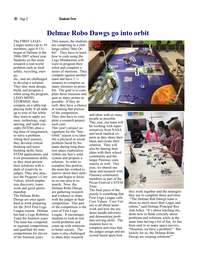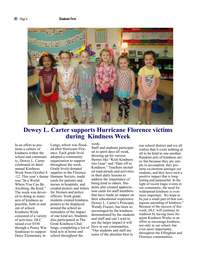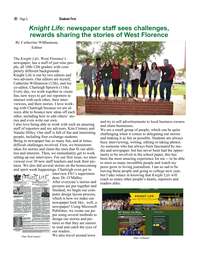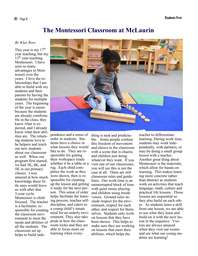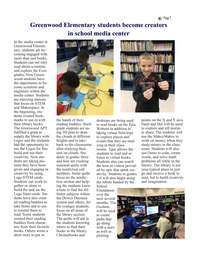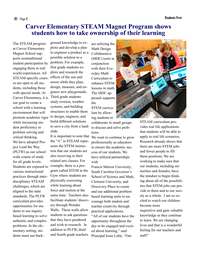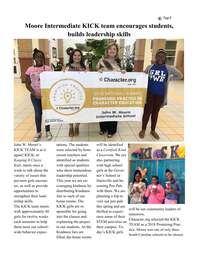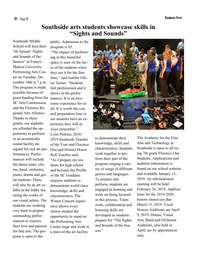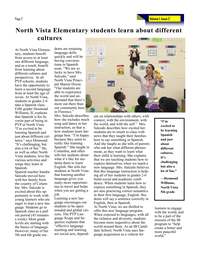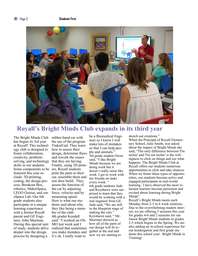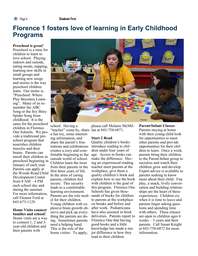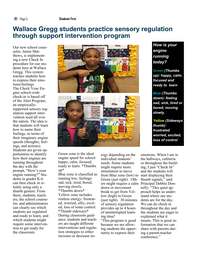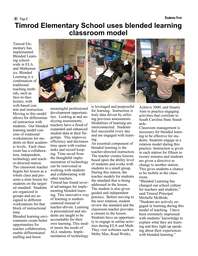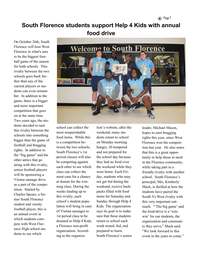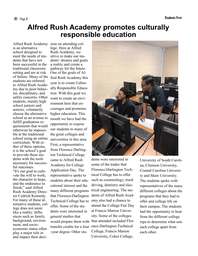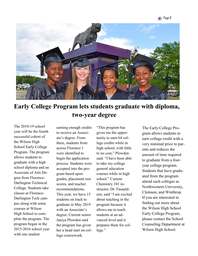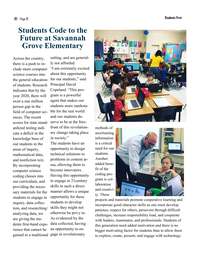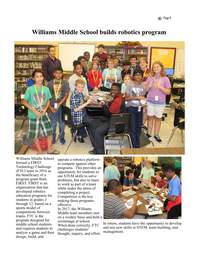Page 2
Volume 1, Issue 3
Fresh off the Farm
In 2015, a group of
Briggs’ faculty
members applied for
and were awarded a
grant from the South
Carolina Department
of Education
(SCDE) and the
United States
Department of
Agriculture (USDA)
to establish a farm at
Briggs, part of the
National Farm to
School Network.
Shortly after, Jeff
Murrie transferred to
the school and, in
addition to his
regular duties as a
Social Studies
teacher, gained the
responsibilities of
fulfilling the grant.
He immediately
became the student,
submerging himself
in educational
practices involving
agriculture. Since
taking on this new
role, Jeff is now a
graduate of the
South Carolina Farm
Bureau Ag in the
Classroom Institute,
he holds a certificate
in Good Agricultural
Practices from
Clemson University
and the Carolina
Farm Stewardship
Association, he is a
graduate of the
School Gardening
for South Carolina
Educators from
Clemson
Extension, and
he recently
returned from
Shelburne Farm
in Vermont
where he
completed the
course
Cultivating Joy
and Wonder for
Early Learners.
Jeff has since
vacated his
former position of
teaching Social
Studies to fully
implement
agriculture into the
Briggs lesson plan.
In three short years,
Jeff along with the
help of so many in
the community have
taken a small grant
and transformed it
into multiple spaces
where children are
able to learn
agriculture. The
original grant helped
to furnish the
materials for a raised
garden.
“I have never
witnessed students
become as excited
and engaged in a
subject as I have
seen in Farm to
School,” Jeff said.
He points out how
students are capable
of fully engaging all
five senses while
they explore and
learn about
agriculture - they
can taste the homegrown
produce, hear
the bees buzzing,
touch the soft new
growth in the
garden, see eggs the
chicken lay, and
smell freshly picked
fruit. It is Jeff’s goal
to influence children
to engage with the
environment around
them.
Clemson
Extension’s 4-H
Club helps maintain
the gardens,
chickens, and helps
with the bees. The 4H
Club is an
organized group of
youths, led by an
adult, with a planned
program that is
carried on
throughout all or
most of the year.
The club provides
important opportunities for youth to
learn subject matter and life skills.
In June, a group of 4-H kids that
attend Briggs raised tomato plants
and basil from seeds, took them to
the Pee Dee State Farmers Market,
and gave them away to patrons
while informing them on the
importance of growing their own
produce. Jeff is excited about future
opportunities. Duke Energy
installed a fruit orchard with
peaches, plums, and blueberries in
which they want to continue to add
to. They also hope to add a new
farm piece or livestock in the
coming year and install a 30’ by 10’
raised bed that will be used to grow
South Carolina cash crops such as
cotton, indigo, corn, and peanuts.
“Fifty years ago, most everyone had
a family member involved in
agriculture. Now it’s really hard to
find that connection. The Ag
classroom gets the students
involved and they get to know
where their food comes from,”
explained Jeff.
Reprinted with permission from VIP Magazine
Page 3
Students First
Delmae Robo Dawgs go into orbit
The FIRST LEGOLeague
teams (up to 10
members, ages 9-13)
began at Delmae in the
2006-2007 school year.
Students on this team
research a real-world
problem such as food
safety, recycling, energy,
etc.,
and are challenged
to develop a solution.
They also must design,
build, and program a
robot using the program,
LEGO MINDSTORMS®,
then
compete on a table-top
playing field. It all adds
up to tons of fun while
they learn to apply science,
technology, engineering,
and math concepts
(STEM), plus a
big dose of imagination,
to solve a problem.
Along their journey,
they develop critical
thinking and teambuilding
skills, basic
STEM applications, and
even presentation skills,
as they must present
their solutions with a
dash of creativity to
judges. They also practice
the Program’s Core
Values, which emphasize
discovery, teamwork
and good sportsmanship.
The
Delmae Robo
Dawgs are once again
hard at work preparing
for the 2018 First Lego
League season. Delmae
has had a Lego Robotics
Team for fourteen years.
The team has competed
in regional competitions
and qualified for state
competitions for eleven
of the fourteen years.
This season, the students
are competing in a challenge
called “Into Orbit”.
They have to learn
how to code using the
Lego Mindstorms software
to program their
robot and complete a
series of missions. They
compete against another
team and have 2 ½
minutes to complete as
many missions as possible.
The goal is to complete
those missions and
gain as many points as
possible. If they do
well, they have a chance
at winning that portion
of the competition.
They also have to complete
a research project
each year.
This year’s project assignment
for the “Into
Orbit” season is to identify
a physical or social
problem faced by humans
during long duration
space exploration
within our Sun’s solar
system and propose a
solution. In order to
complete this portion,
the team has worked to
narrow down their interests
and begin to focus
in on one area to research.
Now, the
Delmae Robo Dawgs
are gathering research
and evidence to share
with the judges at their
competition. This part
of the competition is the
core of First Lego
League. It encourages
students to look at real
world problems and
come up with solutions
to better society. The
team is also challenged
to share their research
and ideas with as many
people as possible.
This year, our team will
be working with representatives
from NASA
and local medical experts
as they share their
ideas and create their
solution. They will
also be sharing their
ideas with their school
community and the
larger Florence community
as well. This
year, we shared our
ideas and research with
Florence community
members as part of the
Pecan Festival’s STEM
Zone.
The final piece of the
puzzle is something that
First Lego League calls
Core Values. Core Values
is all about teamwork
and how the students
handle adversity
and demonstrate problem-solving
skills. The
students have to
complete activities that
the judges assign and are
scored based upon how
they work together and the strategies
they use to complete those activities.
“The Delmae Rob Dawgs team is
about so much more than Legos and
robots,” said Delmae Principal Roy
Ann Jolley. “It’s about teaching students
how to think critically about
problems and solutions while at the
same time having a lot of fun. As has
been said in so many space movies,
“Houston, we have a problem!” But
luckily for us, the Delmae Robo
Dawgs are creating solutions!”
